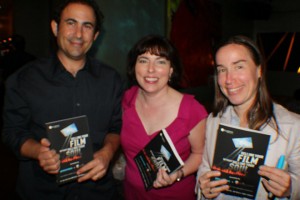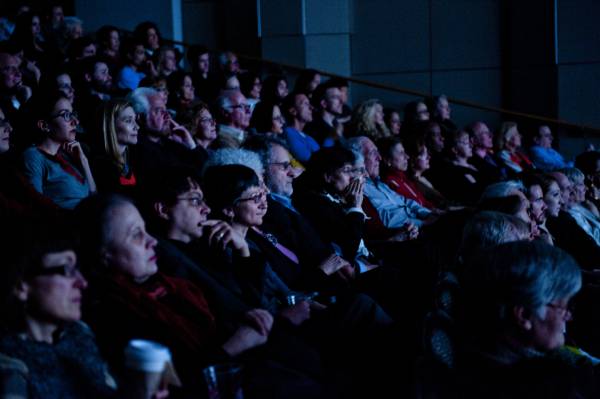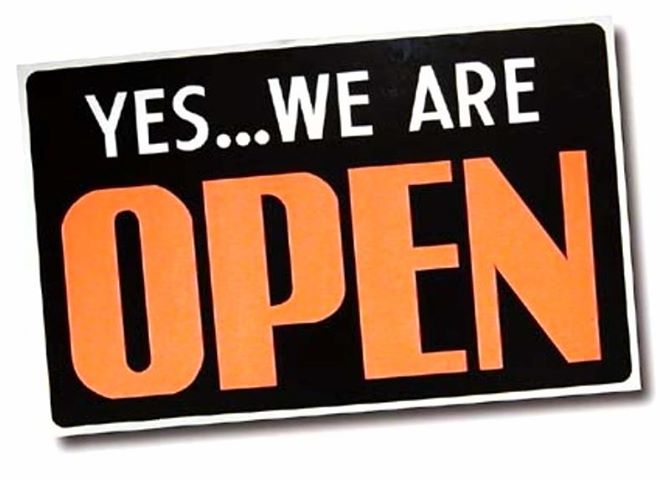
New edition on its way!
Many of you may be aware that we co authored a book in 2011 called Selling Your Film Without Selling Your Soul. It was funded, created and distributed much in the same way we advocate filmmakers approach their work; we attracted sponsors to help pay for the development, creation and the ability to distribute one version of the book as a forever free pdf download; and we self published it because it would be hypocritical to advocate that filmmakers take control of their work while we turned ours over to a publisher. Plus most publishers would bristle at the thought that copies are available for free. We felt that the best way to get our sponsors’ messages seen widely was through free distribution and we need to retain the rights to the work in order to make that happen.

For all who did download and share that book, we thank you and hope that it inspired and guided you on releasing your next projects.
We are several years on from the original release now and our thoughts are turning to our colleagues outside of the US. Most all of our previous case studies came from American filmmakers, but now more and more filmmakers from outside of the US are either leaving their government funded filmmaking schemes due to shrinking budgets or are choosing not even to try for the funds and turning to crowdfunding and private investment. We think it is time to put the spotlight on non US based filmmakers who are navigating their own paths as well as the outlets that are enabling them to reach outside of their countries’s borders and bring their work to a global audience.
I published a short sneak peek at one of my case study chapters on the Selling Your Film blog yesterday, so hop on over and take a look at what writer/director Marcus Markou did with his narrative film Papadopoulos and Sons. Though a timely, sweet and funny film, UK distributors didn’t know what to do with a film that didn’t have major festival accolades or a big name cast (sound familiar?), so Markou took matters into his own hands. What resulted was a hybrid release that included a 7 week theatrical run in the UK with sell out screenings in London’s Cineworld flagship cinema, Shaftesbury Avenue (right in the heart of the city, for those unfamiliar), a nomination from the London Critics’ Circle for Breakthrough British Filmmaker and distribution deals in Germany, Greece, the US, Australia and on major airlines. It is an inspiring tale and I can’t wait for you to read the chapter in full when it is released in May 2014.
Sneak Peek HERE
Sheri Candler February 6th, 2014
Posted In: book
Tags: Case studies, Jon Reiss, Marcus Markou, Orly Ravid, Papadopoulos and Sons, Selling Your Film Without Selling Your Soul, Sheri Candler
Crowdfunding for Bomb It 2-Jon Reiss takes his own medicine
A guest post by filmmaker/consultant Jon Reiss who used Kickstarter to raise over $20,000 for his graffiti documentary follow up, Bomb It 2.
Its almost impossible to write a post on crowdfunding these days that would portend to have something new to say. But I think personal experiences are always helpful and when Sheri asked me to put my thoughts down – how could I say no? I have advised on a number of crowdfunding campaigns so I’m trying to frame this post in terms of what really struck me while running my own campaign – here goes:
1. The first few days are nerve-racking! It’s hard not to panic –and there are ways to prevent against panic. I presold a number of higher value rewards in advance of the campaign so that these would clock in on the first day, giving us an immediate boost. This, I feel, was and is essential. Mobilize your super core audience well in advance, especially those who you think will pony up and do it early.
2. Know your audience. I cannot say enough about this. Even though this was a Kickstarter for Bomb It 2, I had a feeling that we would not get that much support from the graffiti/street art niche – for a few reasons:
A. Even though we were working to redevelop that brand, I had let it slack over the previous 7 years. We did a bit of maintenance – eg our Facebook page in the previous 2 years went from 0-13,000. But the level of engagement was not that high.
B. That audience in the past has not been a big purchasing audience.
So I knew that most of my support would be through my filmmaker as distribution and marketing guy identity. We planned many rewards around this aspect of my brand that I have been developing over the past several years. These are the rewards that sold the best and where most of my support came from – thank you all!
3. Use your Kickstarter campaign to build your brand beyond the project. I’ve always told people that crowdfunding is as much about audience development as it is fundraising, but I didn’t realize how much that was true until I really saw it in action in my campaign and I felt the results. I actually think that artists should do them once a year as a heightened way to connect with their audience.
4. Create a membership perk. As part of my personal brand building, I really wanted to start creating monthly “conversations” with my audience. My first incarnation was a monthly “Join It” conversations for 10 months. We’ve done one and are about to do our second. It’s a bit chaotic – keeping track of the questions on Twitter and trying to fit them all in while keeping the talk focused on a topic. But it’s fun. We’re about to switch to a new platform that will let us really see who is participating which goes toward building a long term relationship with an audience as well. It is better to know exactly who I am speaking with than to regard my supporters as a faceless mass.
5. Keep it Personal. People want to invest in you – not necessarily your project – so if they don’t see you in your video and don’t see you in the updates, it’s just another film. I’ve seen projects that should have been successful, fail – just because the filmmakers didn’t put themselves forward. I don’t understand why the artist wouldn’t really. Even if you are shy on camera, use that to your advantage. Claim your weaknesses as strengths and your strengths as strengths too. I found it really hard to convey the “script” I had prepared, but I didn’t feel that improvising on camera was focused enough. So I created a video about my own difficulty in creating a video.
6. Prepare content in advance. We had a lot of videos and photos prepared in advance, but that was for the Bomb It brand meant to appeal to the street art audience. I was always playing catch up writing blog posts for the film sites I wanted to engage for my personal brand as a filmmaker. I feel as if I eventually did enough, but I could have done more. It is advisable to talk to these publishing sites well in advance. The more popular ones have scheduled content and you need get yourself slotted into their publishing schedules.
7. Be Flexible! We constantly added and altered awards during the campaign. We priced items low early for early adoption then, when those sold out, we added more at a higher price point. Items that weren’t selling (like the artwork, which was surprising), we kept adjusting the price. Some items still never sold. Note: you can’t adjust an item after one has been sold.
8. Email is still the conversion king. While Twitter is good for getting people excited and engaged, all of our donation spikes happened after our email blasts. Cultivate an email list and don’t abuse it.
9. Grab Bag of Confirmed “Crowdfunding Truths”: All of these have been written about before, but they were all born out as extraordinarily true so ignore them at your peril!
A. Prep is crucial. Running a crowdfunding campaign is very similar to making a film. The more you prepare, the more smoothly the shoot/campaign will go.
B. Have a team. There is no way I could have done this without the people on my team – King is a Fink, Diana Duran Jones, Nijla Mumin and Yanique Sappleton. Also, the international team that created the campaign videos: Bernadette Wegenstein (my Austrian director on the breast cancer doc I am producing); Yevgeniy Vaskevich (Russian) who shot and edited the videos; Leone Fei (Italian) – sound.
C. Set your goal appropriately. I didn’t want to pound people and I knew that my film audience was one of the most saturated for campaigns – so I set my goal modestly. However, in retrospect, I should have set it higher because it helps in fundraising when you need to push the last 2 weeks. We hit our mark too early. Then again, I didn’t want to pound people, so in the end I feel we made the right choice.
D. Create a range of interesting rewards. I hate campaigns with DVD, Poster and Download – I’m so bored with those perks. What is interesting about YOU?!
E. Perhaps this isn’t a truth, but is related to the last point. What kind of unique experience can you provide that would be of value to your audience? Sheri Candler got me thinking about this early on and it was great advice. Also you don’t need a fulfillment company or to create merchandise for experiences, one less thing to take money out of your campaign. However, you do need to schedule them!
10. Do not do a campaign when mercury is in retrograde. I thought we did a pretty good job preparing for our campaign and getting people rallied in advance, so I was surprised that after a couple of days our momentum started slacking. It felt like we were walking through mud. When communicating with people as a whole, I always check to see if mercury is in retrograde. (I can see Sheri’s eyes rolling!) [ed: Yes, you can] Sure enough it was, and sure enough when it went out of retrograde in our 2nd week (usually a lull), it seemed that things started to click better. In your timing, don’t just avoid holidays and other known slow periods. Avoid when mercury is in retrograde. This usually happens 1-2x a year. (Also not a good time to pitch projects in general).
Thanks to Jon for contributing his experience crowdfunding for Bomb It 2 on our blog. You can view the entire film on the Bomb It 2 website as well as purchase other merchandise. For more fun and information – follow Jon on Facebook, Twitter or Instagram (@jonreiss)
If you have a useful crowdfunding story of your own, we still have some publishing slots left in November. Please send an email to me sheri [@] thefilmcollaborative.org describing what you would like to share.
Sheri Candler November 11th, 2013
Posted In: crowdfunding
Tags: Bomb It 2, crowdfunding, documentary, independent film, Jon Reiss, Kickstarter, perks


